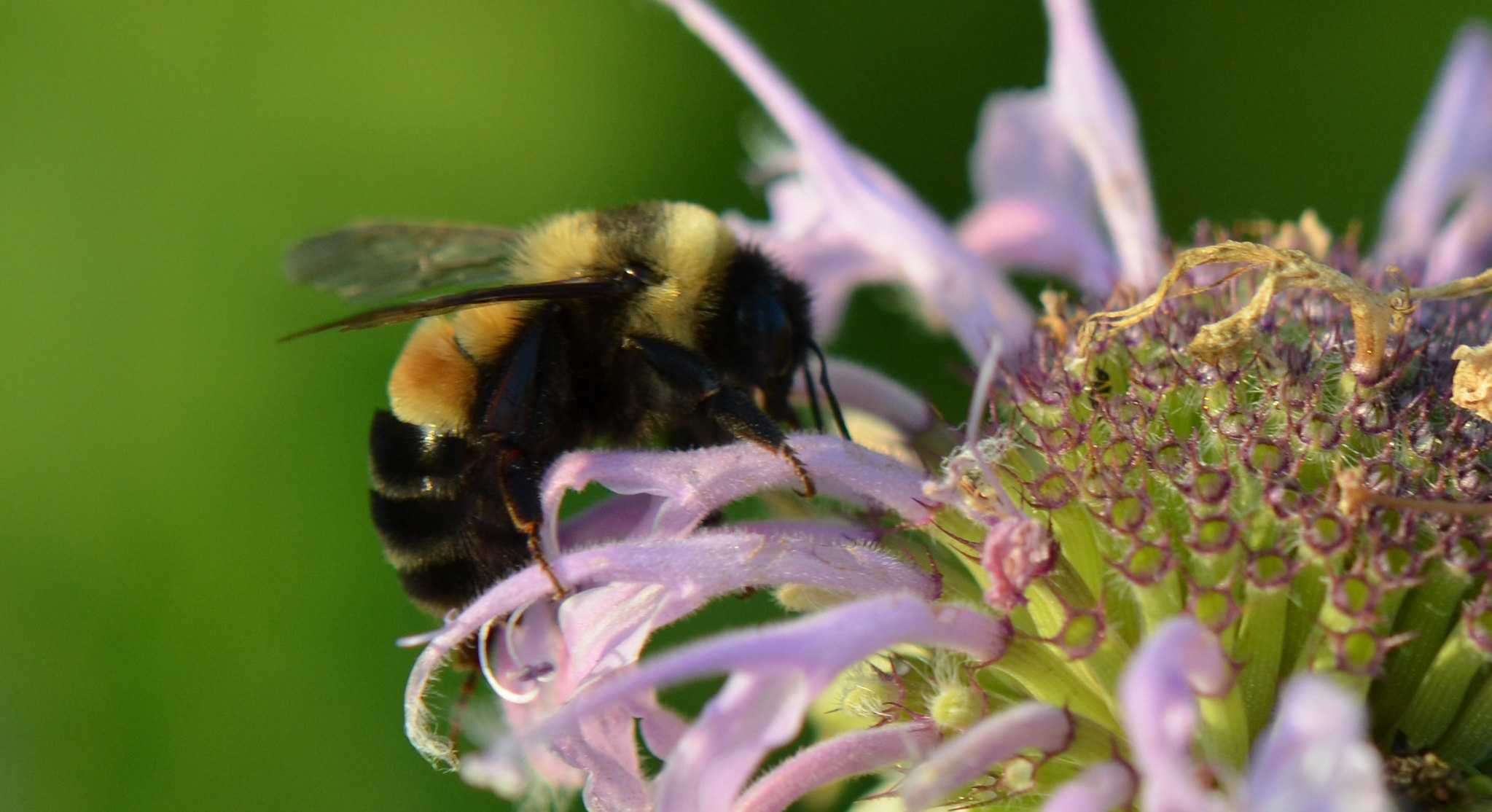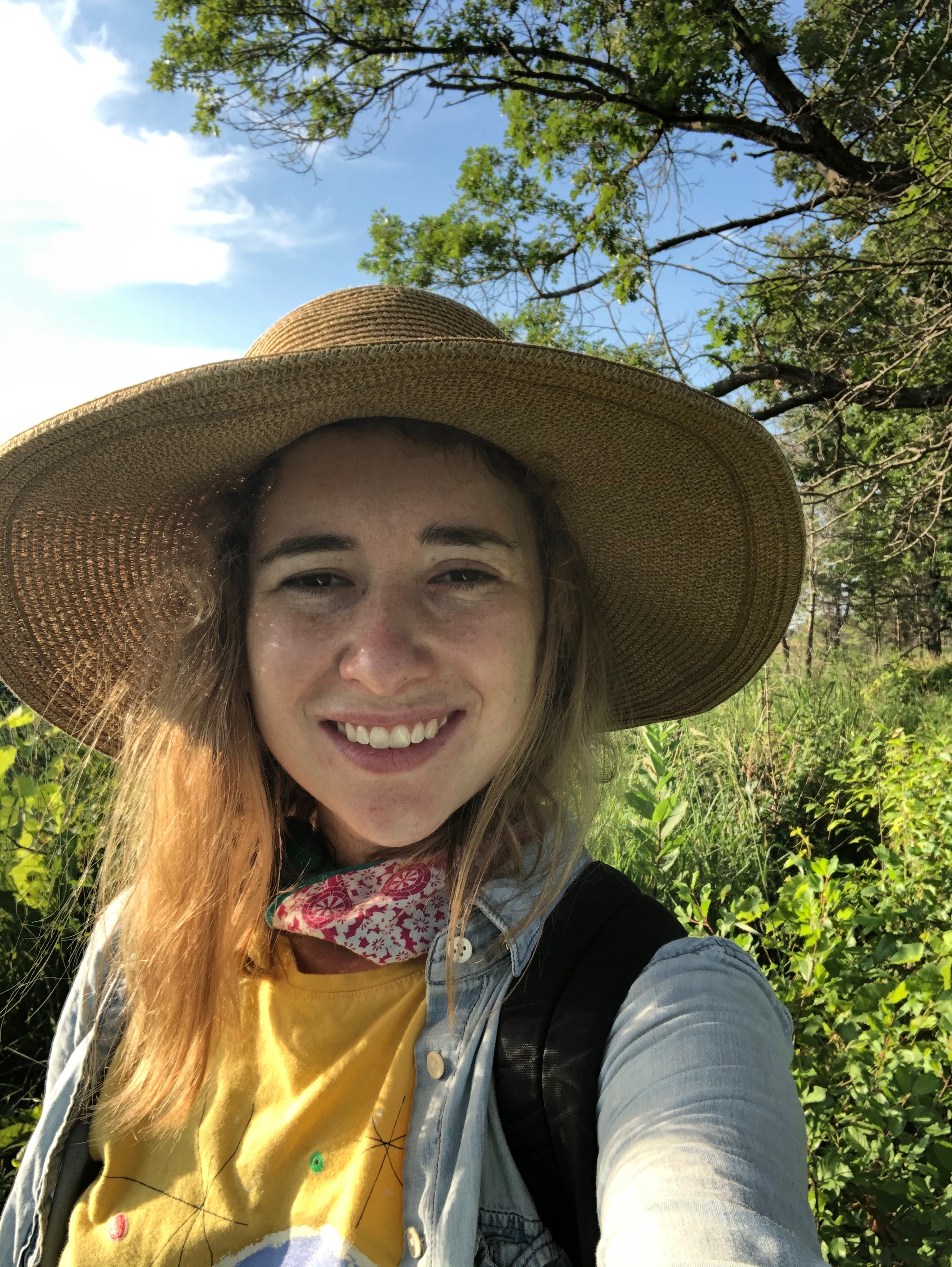 The Rusty Patched Bumblebee's population has declined 87% in the last 20 years. Environmental science student Libby Shafer has launched a project to track and boost the endangered pollinator's habitat. (Image by
U.S. Fish and Wildlife Service)
The Rusty Patched Bumblebee's population has declined 87% in the last 20 years. Environmental science student Libby Shafer has launched a project to track and boost the endangered pollinator's habitat. (Image by
U.S. Fish and Wildlife Service) Graduate student Libby Shafer calls the Rusty Patched Bumblebee a "charismatic megafauna." Fuzzy and buzzy, the native Illinois bee is considered by many to be downright cute. The species' population, however, has declined more than 87% in the past 20 years, and it is the only pollinator on the U.S. endangered species list. As an urban ecologist, Shafer has launched the
Evanston Host Plant Project, a scientific, community-based effort to save the bee's habitat.
 Urban ecology student Libby Shafer uses geographic information system mapping and environmental science as the foundation for her project. (Image courtesy of Libby Shafer)
Urban ecology student Libby Shafer uses geographic information system mapping and environmental science as the foundation for her project. (Image courtesy of Libby Shafer)"Bumblebees are important pollinators for native flowers and the crops that we eat, and they provide many benefits for people and the ecosystem," Shafer says. The project is focused on the Chicago suburb of Evanston, where Shafer grew up. Participants grow host plants for the bees, upload photos of existing plants and report bee sightings using the
iNaturalist mobile app. So far, more than 200 people have signed on to make more than 700 observations.
As with much conservation, the work begins in the backyard. People outside of Evanston are also welcome to join the effort to save the Rusty Patched Bumblebee.
"I see a lot of potential in yard spaces," says Shafer, who grew up in suburban Evanston, just north of Chicago. "I'm interested in understanding how people perceive their yards as spaces for conservation. So much land is covered in turf grass that could be transformed to be beneficial for pollinators."
There are 38 plants native to Illinois that host the bee, including Virginia Bluebells, Hyssop, Milkweed, Coneflower, Foxglove Beardtongue, and Mountain Mint. Shafer suggests people grow a variety of plants that bloom throughout the season to help create habitat connectivity for the bumblebee.
"Some pollinators rely on just one host plant. Part of what drew me to this species is the potential to get people involved in creating habitat. A lot of people probably already have some of these plants in their yards, or have access to grow them," Shafer says.
Others at the university see potential in the project as well. "Libby's proposal is strong because of its strong scientific foundation and the project's potential to create impact," says associate professor Christie Klimas, Shafer's advisor. She is also looking forward to Shafer's survey work, asking participants about their attitudes after participating in the project. "The results could build understanding of the factors that lead people to engage in conservation, as well as hurdles to conservation projects on private lands," Klimas says.
Collaborating with local nonprofits, parks and community groups has given the project more traction. One alliance is with Natural Habitat Evanston, a group of about 500 novice and experienced gardeners dedicated to protecting and creating habitat.
Urban ecology, or the study of ecosystems within more dense urban areas, is what drew Shafer to DePaul. She cites the opportunity to study with the Geography Department, where she studied geographic information systems, to making broader connections in her field.
"I use iNaturalist to document existing host plants and to create maps. These skills have been really beneficial to my understanding of sustainability and urban biodiversity. It's equipped me with a lot of knowledge about environmental sciences and helps me feel like I can make an impact," Shafer says.
In appreciation of her work connecting with the community, Shafer was recently named a Harrison I. Steans Graduate Fellow. She will receive support from DePaul's Steans Center for her project and will collaborate with other fellows focused on sustainability and equity.
Need a bee fact to drop at your next social event? While honeybees might get a lot of attention, they are not native to Illinois, explains Shafer, but were imported from Europe. "Bumblebees are much more efficient pollinators," she says.
Shafer and DePaul classmate Gabby Bozeman are organizing a series of host plant giveaways. Learn more about their upcoming events on their
Facebook page.
###
Media contact:
Kristin Claes Mathews
kristin.mathews@depaul.edu
312-362-7735